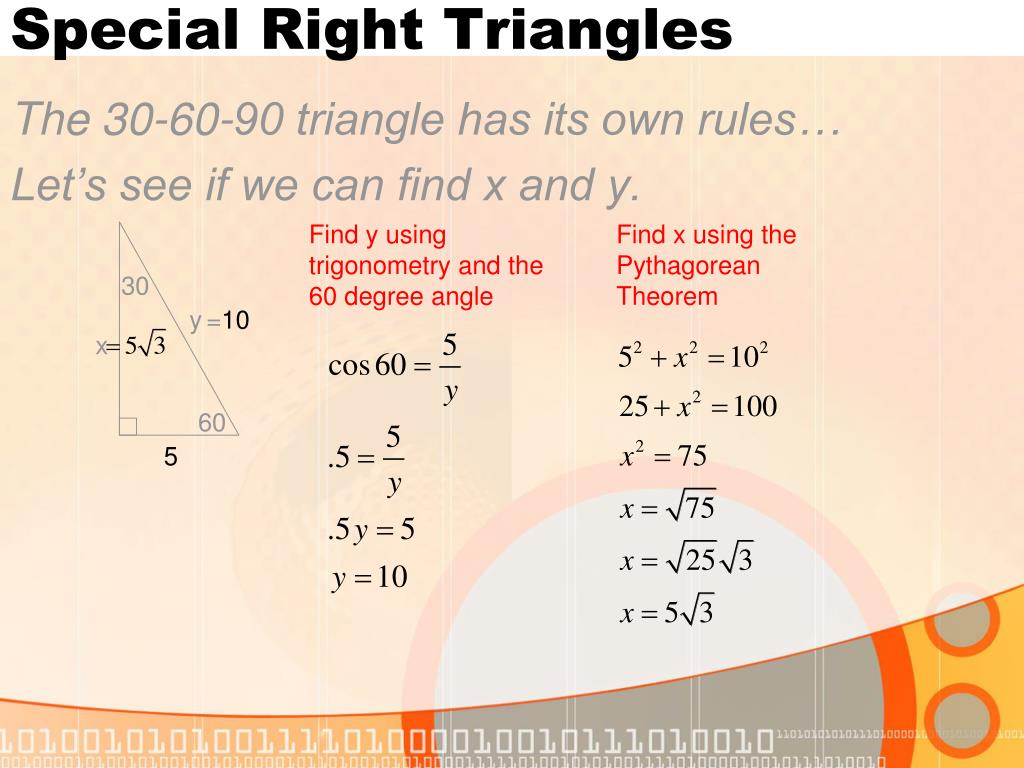

It's formed by three squares sides. You have produced a 45-right triangular. Always bear in mind that it coincides as an isosceles right triangle. Therefore, if you have a right triangle with either both legs equivalent and both non-right angles equal, then the triangle must be a 45 right triangle.
Learn to recognize Pythagorean Triple Triangles. In our special right triangles calculator, we implemented five chosen triangles: two angle-based and three side-based. A special right triangle is a right triangle whose sides are in a particular ratio. You can also use the Pythagorean theorem formula, but if you can see that it is a special triangle it can save you some calculations.There are a couple of special types of right triangles, like the 45-45 right triangles and the 30-60 right triangle. Angle-based right triangles - for example 30°-60°-90° and 45°-45°-90° triangles Because of their angles it is easier to find the hypotenuse or the legs in these right triangles than in all other right triangles.
When you see a right triangle with legs of length 3 and 4, you can instantly be certain that the hypotenuse will be 5 without having to do any calculations. The first Pythagorean triple is 3-4-5 (3 2 + 4 2 = 5 2, 9 + 16 = 25). If you memorize the first 2 Pythagorean triples, in particular, you can save yourself a lot of time on these tests because you can immediately know the hypotenuse of one of these triangles just by looking at the side lengths! X Research source These special triangles appear frequently in geometry text books and on standardized tests like the SAT and the GRE.
Also be on the lookout for multiples like 10-24-26 and 2.5-6-6.5. The second Pythagorean triple that commonly appears on tests is 5-12-13 (5 2 + 12 2 = 13 2, 25 + 144 = 169). Try the math and see for yourself! The same holds true for 9-12-15, and even 1.5-2-2.5. For example a right triangle with legs of length 6 and 8 will have a hypotenuse of 10 (6 2 + 8 2 = 10 2, 36 + 64 = 100).


 0 kommentar(er)
0 kommentar(er)
